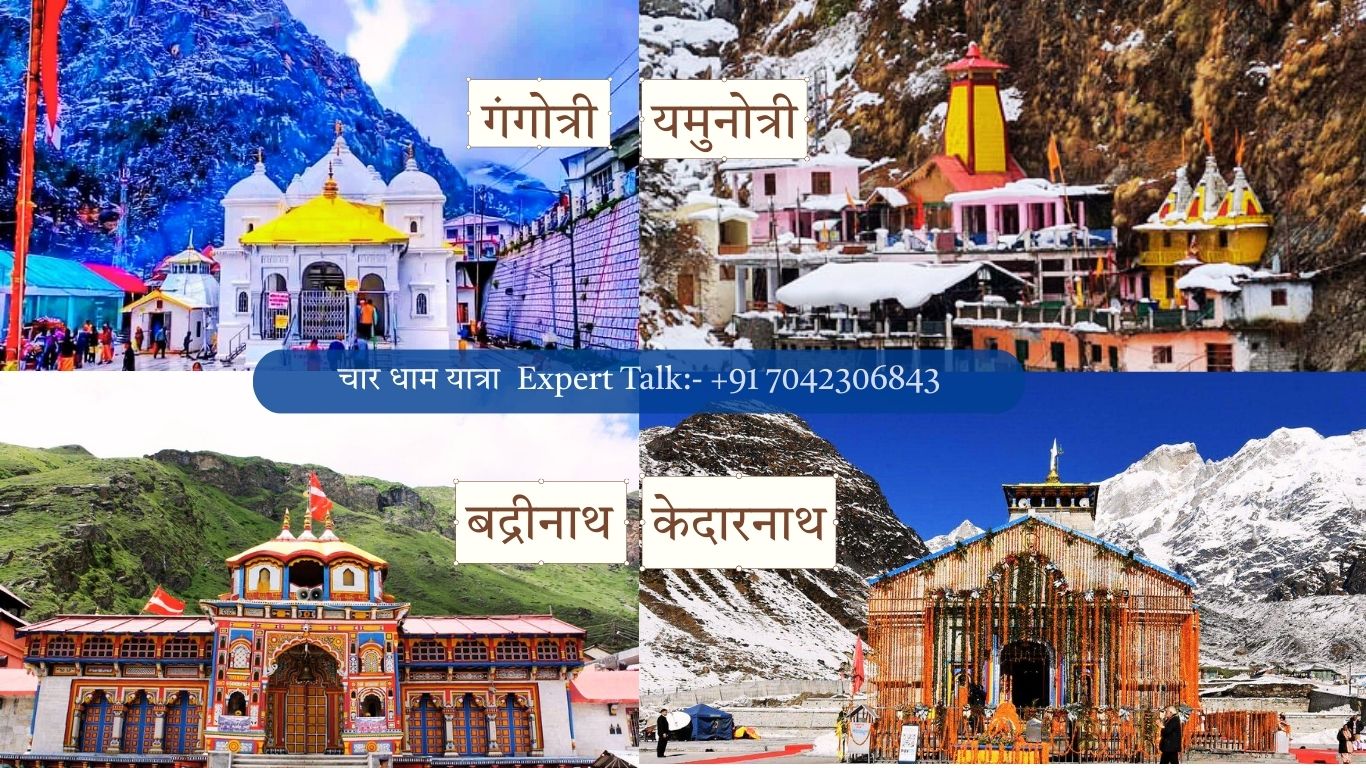
Char Dham Yatra India–Spiritual Heart of the Himalayas
India is a land of spirituality, where religion and faith play a significant role in people’s lives. Among the numerous pilgrimages in India, the Char Dham Yatra holds a special place for Hindus. The term “Char Dham Yatra Family Package” refers to four sacred sites that are considered essential for attaining moksha (liberation). These shrines are spread across different regions of the country and attract millions of devotees every year.
Dham Char Dham Yatra Name – Sacred Pilgrimage of Spiritual Significance
Embarking on the Char Dham Yatra is a deeply spiritual journey that takes devotees through four of the holiest sites in Hinduism, nestled in the majestic Himalayas. Known as the “4 Dham,” these sacred destinations are:
- Badrinath Dham – Abode of Lord Vishnu
Located in Uttarakhand, Badrinath is dedicated to Lord Vishnu and is one of the most revered temples in India, attracting millions of devotees each year.
- Kedarnath Dham – Sacred Shrine of Lord Shiva
Kedarnath, also in Uttarakhand, is dedicated to Lord Shiva and is one of the 12 Jyotirlingas, situated amidst the stunning Garhwal Himalayas.
- Gangotri Dham – Origin of the Holy Ganga
Gangotri is the source of the sacred Ganga River and symbolizes purity and salvation, making it an essential part of the Char Dham circuit.
- Yamunotri Dham – Birthplace of the Yamuna River
Yamunotri, the starting point of the Yamuna River, is revered for its association with the Goddess Yamuna and its beautiful natural surroundings.
Significance of Char Dham Yatra
The Char Dham Yatra is considered highly sacred in Hinduism. It is believed that visiting these four temples at least once in a lifetime washes away sins and helps one attain salvation. Each Dham is dedicated to a different deity, making the pilgrimage spiritually enriching.
- Badrinath Dham – Dedicated to Lord Vishnu
- Dwarka Dham – Associated with Lord Krishna
- Jagannath Puri Dham – Dedicated to Lord Jagannath (a form of Krishna)
- Rameswaram Dham – Dedicated to Lord Shiva
Detailed Overview of the Four Dhams
1. Badrinath Dham (Uttarakhand)
Location: Chamoli district, Uttarakhand
Deity: Lord Vishnu (as Badrinarayan)
Significance: Badrinath is one of the most important pilgrimage sites for Vaishnavites. It is located in the Garhwal Himalayas at an elevation of 3,300 meters. The temple is dedicated to Lord Vishnu, who is worshipped here as Badrinarayan. The legend states that Adi Shankaracharya discovered the idol of Lord Vishnu in the Alaknanda River and enshrined it in the temple.
Best Time to Visit: The temple remains open from April/May to October/November due to heavy snowfall in winter.
Nearby Attractions:
- Mana Village (the last Indian village near the Tibet border)
- Vasudhara Falls
- Tapt Kund (hot water spring)
2. Dwarka Dham (Gujarat)
Location: Devbhoomi Dwarka, Gujarat
Deity: Lord Krishna
Significance: Dwarka, the kingdom of Lord Krishna, is a revered pilgrimage site for Hindus. The Dwarkadhish Temple, built by Vajranabha (Krishna’s great-grandson), is the main attraction. Dwarka is also one of the Sapta Puris (seven holy cities) in Hinduism.
Best Time to Visit: October to March, when the weather is pleasant.
Nearby Attractions:
- Nageshwar Jyotirlinga
- Bet Dwarka
- Rukmini Temple
3. Jagannath Puri Dham (Odisha)
Location: Puri, Odisha
Deity: Lord Jagannath (Krishna), along with Balabhadra and Subhadra
Significance: Jagannath Puri is famous for the annual Rath Yatra (chariot festival), where the deities are taken out in grand processions. The temple is unique as the idols of deities are made of wood and are replaced every 12 to 19 years in a ritual called Nabakalebara.
Best Time to Visit: Throughout the year, but especially during the Rath Yatra in June/July.
Nearby Attractions:
- Konark Sun Temple
- Chilika Lake
- Gundicha Temple
4. Rameswaram Dham (Tamil Nadu)
Location: Ramanathapuram district, Tamil Nadu
Deity: Lord Shiva
Significance: Rameswaram is associated with Lord Rama, who, according to mythology, built a bridge (Ram Setu) to Lanka from here. The Ramanathaswamy Temple, with its massive corridors and sacred wells, is an architectural marvel.
Best Time to Visit: October to April, when the climate is cooler.
Nearby Attractions:
- Dhanushkodi (the ghost town)
- Agni Theertham
- Pamban Bridge
How to Undertake the Char Dham Yatra
Travel Tips:
- Plan the journey based on seasonal weather conditions.
- Ensure physical fitness, as some routes involve trekking.
- Make prior arrangements for accommodation and transport.
- Respect the customs and traditions of each shrine.
Mode of Travel:
- Air: Nearest airports to each Dham are Dehradun (for Badrinath), Jamnagar (for Dwarka), Bhubaneswar (for Puri), and Madurai (for Rameswaram).
- Rail: Each pilgrimage site is well-connected by railway stations.
- Road: Well-maintained roads and state transport services are available.
Mini Char Dham (Chota Char Dham Yatra)
Apart from the main Char Dham, Uttarakhand has a “Chota Char Dham,” which includes:
- Yamunotri (dedicated to Goddess Yamuna)
- Gangotri (dedicated to Goddess Ganga)
- Kedarnath (dedicated to Lord Shiva)
- Badrinath (dedicated to Lord Vishnu)
This pilgrimage is particularly popular among devotees in North India.
Conclusion
If you are looking for a comfortable trip, the Krishna Alliance Tour and Travels provides a perfect. tour packages for a comfortable journey. the Char Dham Yatra is not just a journey; it is a spiritual quest that brings peace and enlightenment. The pilgrimage represents the essence of Hindu devotion and unity, attracting millions of pilgrims from across the world. Whether undertaken for religious reasons or as a means to explore India’s rich heritage, the Char Dham Yatra is a must-experience for every devotee.
#Char Dham #Char Dham Yatra #Char Dham Yatra Family #Char Dham Yatra Family Package
Related Posts
 The 2025 Best Cruise Lines for Families
The 2025 Best Cruise Lines for Families
 Mountains is always right destination.
Mountains is always right destination.
 Take only memories, leave only footprints.
Take only memories, leave only footprints.
